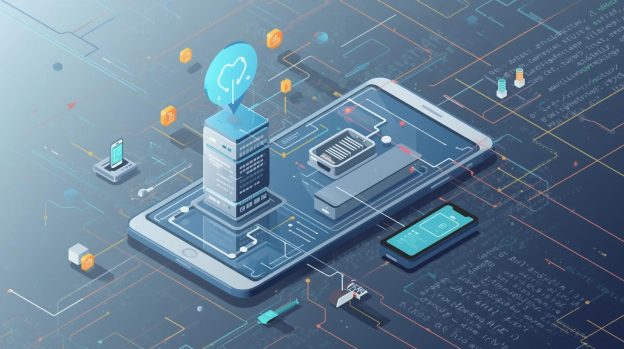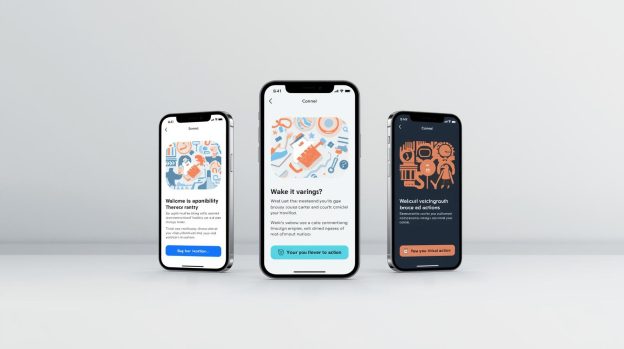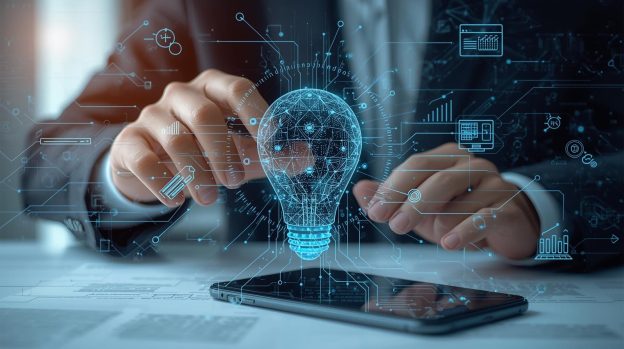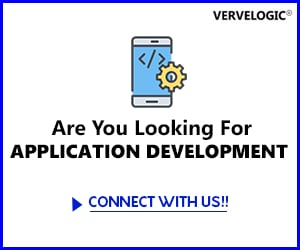B2B App Trends: What’s Changing in 2025?
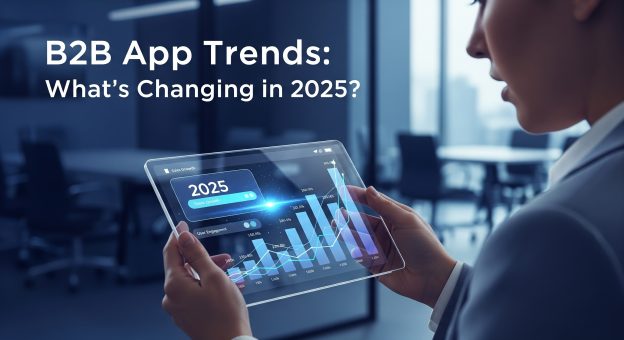
The ongoing trends in the B2B environment are a result of changing buyer expectations and a technology shift. If businesses do not adapt to the newest technology trends to stay competitive, they are going to be left behind. But what does the future of B2B ecommerce entail? How do they stay ahead of the curve in this competitive marketplace?
It is not only about adopting the latest tools and technologies. It is about accepting the new and upcoming trends in B2B e-commerce to serve a significant audience.
In this blog, we will talk about the trends surrounding B2B e-commerce and their adoption in B2B mobile applications.
What Do You Mean by B2B eCommerce?
One of the reasons for the significant evolution in the B2B e-commerce mobile apps is that buyers no longer want a troublesome customer experience. Buyers don’t want to be a part of endless email chains and wait on the other side of long phone calls. They want a smooth online shopping experience that offers clear pricing and quick access, just like regular shoppers.
In B2B businesses, one entity serves another by providing them with products and services they require to run their business smoothly. It means that the seller businesses, their tools, website and customer experience need to level up.
Before we dive into understanding the current ongoing trends in B2B e-commerce apps, let’s first understand what B2B e-commerce is.
B2B e-commerce is simply business-to-business electronic commerce. It means selling services and products from one business to another. The B2B businesses do not sell products or services to individual shoppers like in B2C, but here, businesses are selling to other businesses or companies.
For example, a wholesaler selling automotive parts to the manufacturer or the paper supplier supplying notepads and other products to corporate offices. Here, the buyer itself is a business and not an individual customer.
Let’s Discover Top 3 B2B App Trends in 2025
#1: Hyperpersonalisation
The first trend in the B2B e-commerce is hyperpersonalisation. For most businesses, hyperpersonalisation is not just an ad on service; it has become a non-negotiable service that mobile app development companies need to integrate into B2B apps.
- Businesses are not willing to work with generic websites anymore. They want a wholesome experience that feels personal to them and not just generic.
- For example, if they browse the B2B apps for specific products, they want to see more products which are similar to their primary searches.
- It means that B2B apps need to cater to the audience by providing them personalised recommendations based on their saved preferences.
- Customers expect to see hyperpersonalised pricing, a pricing catered to their preferences and buying behaviour on the b2b app.
- The B2B e-commerce apps need to cater to businesses by offering them personalised product recommendations by using data from their browsing habits, past orders and account details to show them relevant content.
#2: AI-Powered Services in B2B App
A B2B e-commerce mobile app should offer user-friendliness for businesses where information is accessible to customers at their fingertips. With the integration of artificial intelligence in many mobile applications today, it has really opened up new scope for mobile apps in the domains of healthcare, IT, education, e-commerce, etc.
- Integration of artificial intelligence in the mobile application can help with dynamic customer support, smart pricing updates and product recommendations.
- In addition, AI integration in B2B apps can help customers manage inventory smartly.
- For example, say a business is looking for a certain product, an AI-integrated B2B mobile app will provide similar products so that buyers can expand their search and look into more options.
- AI-powered chatbot integration into the B2B mobile application will help businesses cater to their audience proactively.
- AI chatbots are fast, efficient and use natural language processing and sentiment analysis to guide customers with the checkout process and with other inquiries related to their purchase.
#3: Mobile-First Approach in B2B Apps
B2B applications require a mobile-first approach, and not only mobile-friendliness. Mobile app development companies should focus on enhancing user experience by providing a mobile-first B2B app. Customers are not only sitting in one place in front of their PCs all day. Mobile app companies should recognise that making shopping more accessible for customers will benefit businesses that cater to other businesses.
- Customers are constantly on the move. Customers are placing orders, checking prices and reviewing products from their mobile phones.
- Since the evolution of mobile phones has been significant in the past few years, it is the smartest and most accessible “computer” there is.
- So to make the application with the approach of mobile-first, mobile developers need to focus on creating fast, efficient and simple applications which offer enhanced user experience.
- The smooth user flows like simple checkout processes, minimalistic yet attractive app interfaces, and easy navigation will allow businesses to browse products at their fingertips.
- Hence, mobile-first is not only a part of experience, it’s a necessity in 2025.
To Sum Up
AI integration in B2B mobile apps is not in demand for the right reasons. It delivers an enhanced user experience and supports the buyer journey efficiently. The mobile app developers at VerveLogic, a leading mobile application development company in New York, are experienced in delivering quick and efficient B2B applications to businesses. If you cater to the B2B audience and require a user-friendly and smart B2B application, we encourage you to contact our experts who can fulfil your project requirements.
